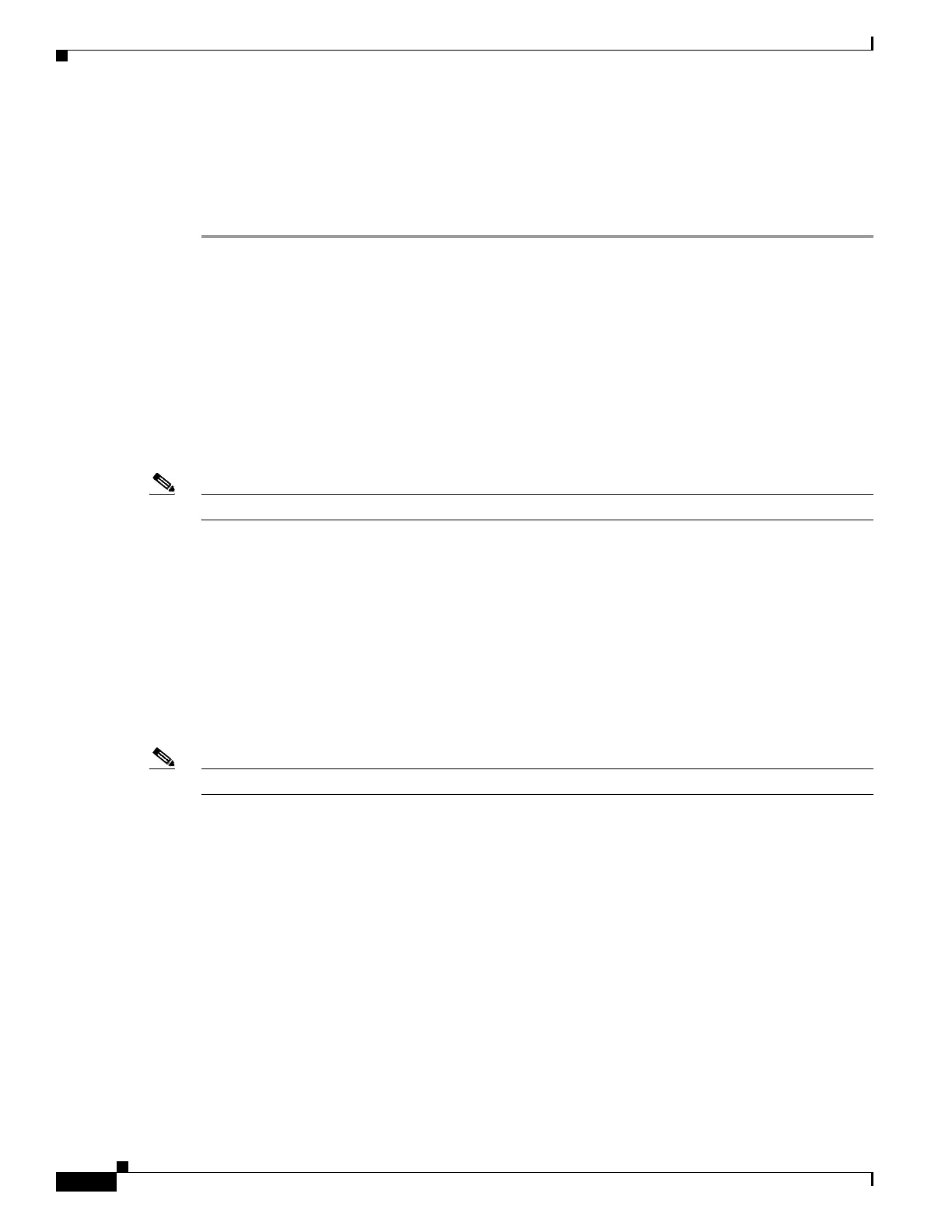2-120
Cisco ONS 15310-MA SDH Troubleshooting Guide, Release 9.0
78-18663-01
Chapter 2 Alarm Troubleshooting
Alarm Procedures
Step 5 Clear alarms in the far-end node, especially the “HP-UNEQ” alarm on page 2-141 or the “LP-UNEQ”
alarm on page 2-142.
Step 6 If the condition does not clear, log into the Technical Support Website at
http://www.cisco.com/cisco/web/support/index.html for more information or call Cisco TAC
(1-800-553-2447).
2.7.183 ROLL
Default Severity: Not Alarmed (NA), Non-Service-Affecting (NSA)
SDH Logical Objects: VCMON-HP, VCTRM-HP, VCMON-LP, VCTRM-LP
The ROLL condition indicates that circuits are being rolled. This is typically done to move traffic for a
maintenance operation or to perform bandwidth grooming. The condition indicates that a good signal
has been received on the roll destination leg, but the roll origination leg has not yet been dropped. The
condition clears when the roll origination leg is dropped.
Note ROLL is an informational condition and does not require troubleshooting.
2.7.184 ROLL-PEND
Default Severity: Not Alarmed (NA), Non-Service-Affecting (NSA) for VCMON-HP,
VCMON-LP, VCTRM-LP; Not Reported (NR), Non-Service-Affecting (NSA) for VCTRM-HP
SDH Logical Objects: VCMON-HP, VCMON-LP, VCTRM-LP
ROLL-PEND indicates that a roll process has been started, but a good signal has not been received yet
by the roll destination leg. This condition can be raised individually by each path in a bulk circuit roll.
The condition clears when a good signal has been received on the roll destination leg.
Note ROLL-PEND is an informational condition and does not require troubleshooting.
2.7.185 ROUTE-OVERFLOW
Default Severity: Minor (MN), Non-Service-Affecting (NSA)
SDH Logical Objects: NE
DWDM Logical Object: NE regardless of MSTP or MSPP
The ROUTE-OVERFLOW indicates the condition when the OSPF routing table exceeds 700 routes. The
symptoms for this condition are loss of visibility to a node or network, inability to access a node using
CTC, CTM, Telnet, Ping, and so on.

